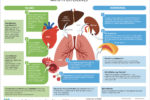Ten per cent of the annual NHS budget is spent on medication, with about 75% of this is prescribed in primary care. Ensuring that this money really improves patients’ health is vitally important. As the population ages, more people require increasing numbers of medications for chronic conditions and a third of elderly patients are taking four drugs or more for a spectrum of conditions. But this creates a major challenge – as research reveals that fewer than half of these patients take their medicines as prescribed. How can this challenge be addressed? This new series will provide simple practical guidance on how to conduct an effective medication review for a spectrum of long-term cardiovascular conditions.






















